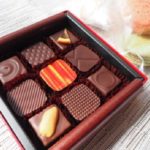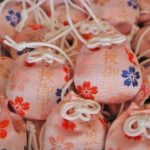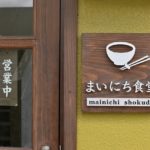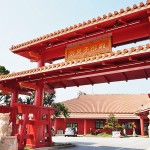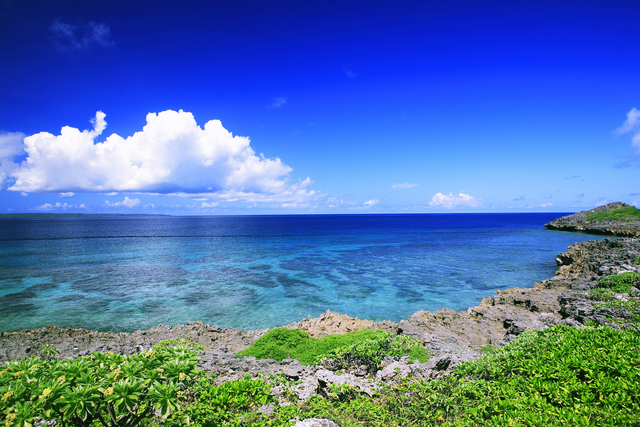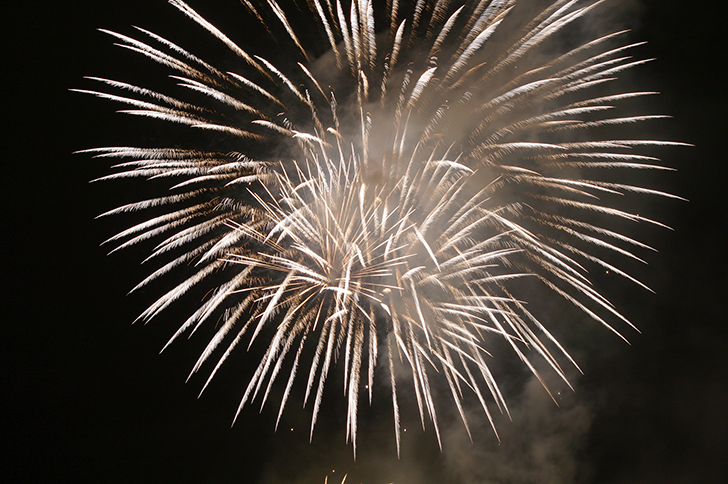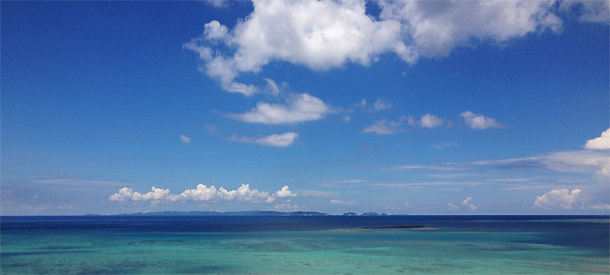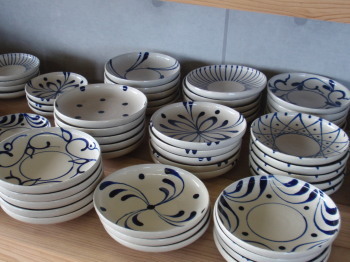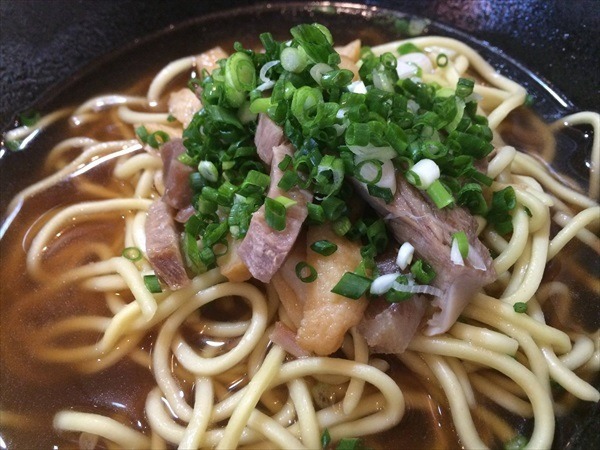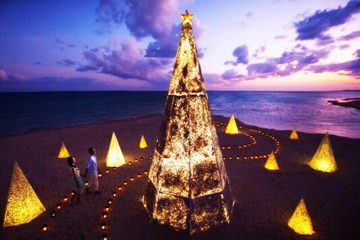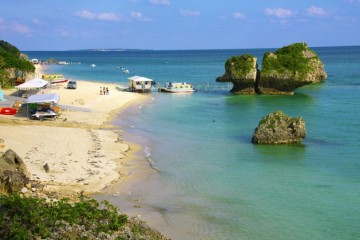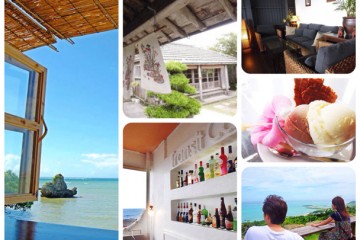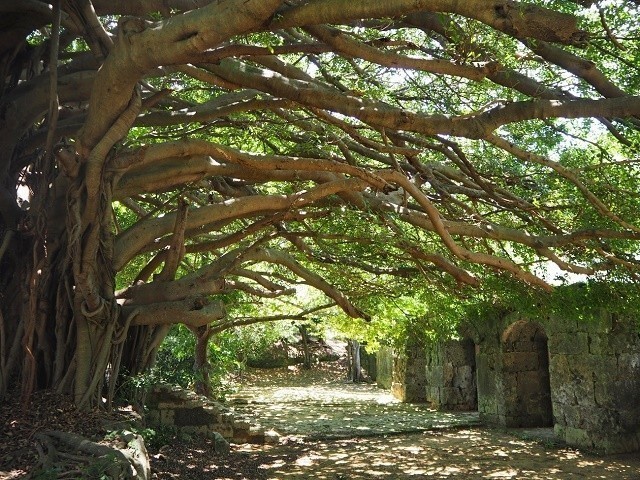
After the wet and moist rainy season comes the long-awaited Summer.
The secret to overcoming the heat of summer is not eating a delicious cup of Japanese Kakigori, nor a scrumptious bowl of Hiyashi Chuka chilled noodles. No, the best way to relieve the heat is to hear a tale that will send a chill down your spine and into your bones — that’s right, horror stories!
This occasion’s plan is an ace up our sleeve to scare away the heat! We will introduce Okinawa’s famous horror stories, spooky folklores and legends. Of course, it won’t end there! We will also take you to the locations where those stories and legends took place!
The settings of this here story and that over there story… are actually right beside Okinawa’s staple tourism spots!?!?
So, let’s get out of our rooms chilled by air conditioners and embark on a Spooky Story-Spot tour that will *really* freeze us to the core!
TABLE OF CONTENTS
1. The Story of Onimochi (Muchi), the Demon Cake | Shuri, Naha
2. The Ghost Lights of Shichinanda Slope | Shuri, Naha
3. Mimichiri-Boji, the Ear-cutter Monk | Shuri, Naha
4. Nanatsubaka | Makishi, Naha
5. Kyu-Sogenji Ishimon | Tomari, Naha
6. Right Beside You. . .
1. The Story of Onimochi (Muchi), the Demon Cake | Shuri, Naha
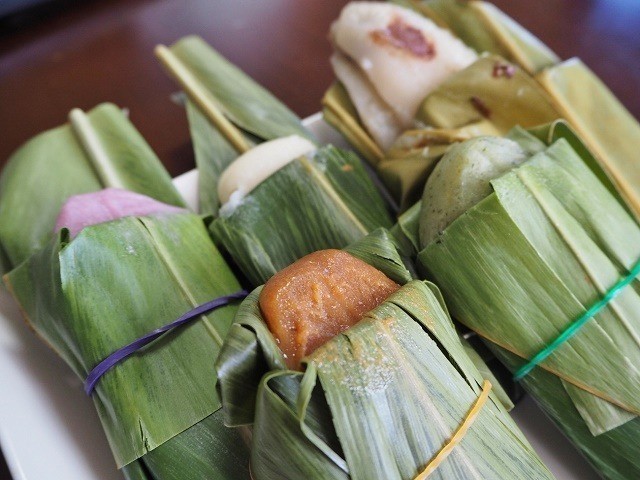
Muchi is the soul food of Okinawa that pops up from time to time even in Okinawa Labo.
In December 8 of Japan’s old calendar, there is something called “Muchi Day” where people eat Muchi wrapped in shell ginger leaves and pray for their families’ sound health and the healthy growth of their children.
When writing Muchi in Kanji, it is either written as “餅” or “鬼餅 (which is then read as Unimuchi or Onimochi)”.
Though the Kanji letter of “鬼” is used as a lucky charm as seen in many of Japan’s famous spots, Okinawa’s “鬼餅” gets its name from a surprisingly scary story…
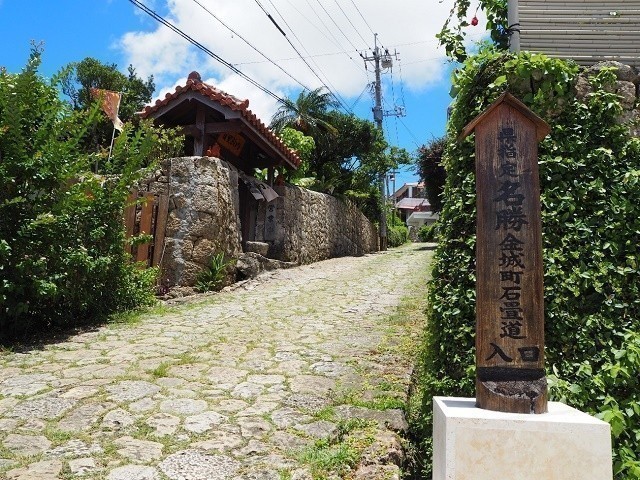
The story takes place in Uchi-Kanagusuku-Taki, home to a particularly large Bishop Wood at Shuri, Kinjo-Ishidatami.
Once upon a time, there were two siblings, brother and sister, who lived in Kinjo, Shuri.
And before anyone knew it, that brother turned into an Oni (鬼), a demon that devoured both man and cattle, and he retreated to a cave. The sister, who in her heart mournfully resolved to do something about her brother, prepared his favorite snack of Mochi and kneaded it with iron. She then set out to meet him. “Let’s go eat these delicious Mochi that I made together,” she said, persuading the beast to follow her on top of a precipice.
Looking upon her brother that had turned, both body and soul, into a malignant demon, the sister decided in her heart of hearts to defeat him. And once the Oni staggered in pain after eating the iron-kneaded Mochi, the sister pushed him off the precipice.
The sister was hailed as a hero and thanked by the people, and the Mochi rice cake that led to the literal downfall of the Oni was thereafter called “Onimochi”. And they lived… happily… ever… after?
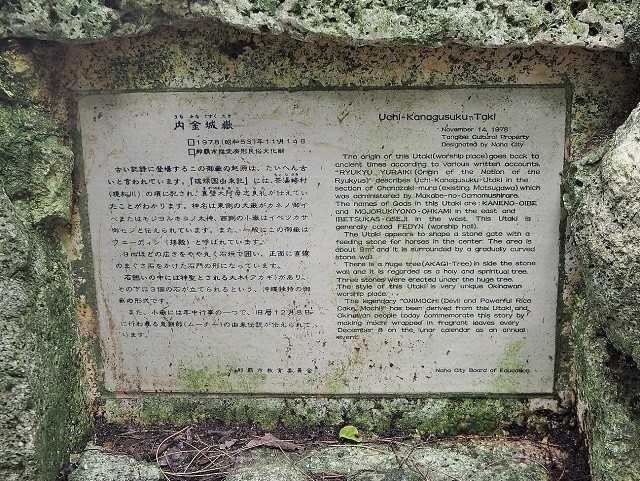
One cannot honestly end it with a “happy ever after” with that story’s inherently deep darkness!
There are several versions to the story where Onimochi gets it name from, with the ingredient kneaded in the Mochi and the way the sister beat the Oni being different with each version. And though there are also extreme details that children should not be allowed to hear, all stories share the fact that the brother turned into a demon and the sister defeated him. The place where the defeat of the demon happened is the “Uchi-Kanagusuku-Taki”.
At the “Uchi-Kanagusuku-Taki”, there are two Utaki (places of worship), one big and one small. It is said that the horn of the defeated Oni is on display at the smaller Utaki.
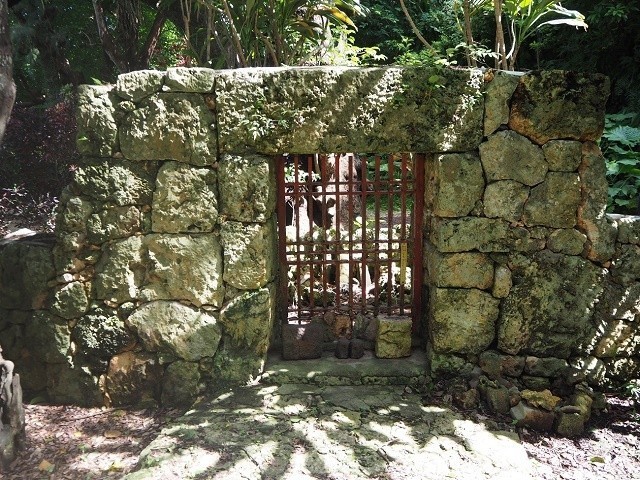
Apparently the brother who turned into an Oni died by falling from the precipice (more like a small drop in elevation, however) located on the right of this small Utaki.
The thing that is the scariest about this story is the fact that we do not know the precise reason *why* the brother suddenly turned into a demon. Perhaps it is a warning on how we don’t really know when and how a human being will suddenly turn into a murderous, raving mad demon…
Did the brother retreat into the cave because he turned into a demon, or did he become a demon because he retreated into the cave? Did the brother really turn into an Oni to begin with? And if the sister permanently “defeated” him, that must mean she…
The charm of horror stories, without a doubt, is the fact that they engage our imagination.
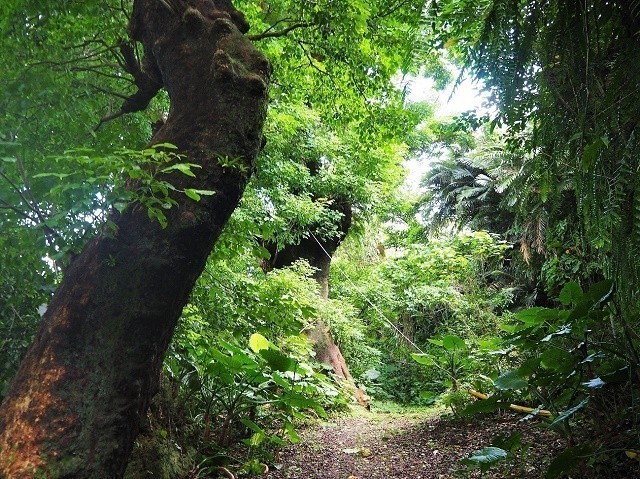
[The place of the Onimochi’s origin (Uchi-Kanagusuku-Taki)]
*Location | 6 minutes by foot from Kinjocho-Sekidatami Entrance (on the side of both Shuri Castle and Kinjo Dam)
*Also famous as a spiritual power spot that has a large Bishop Wood that is over 300 years old.
*Spots Nearby | Shuri Castle, Kinjo Stone Road
2. The Ghost Lights of Shichinanda Slope | Shuri, Naha
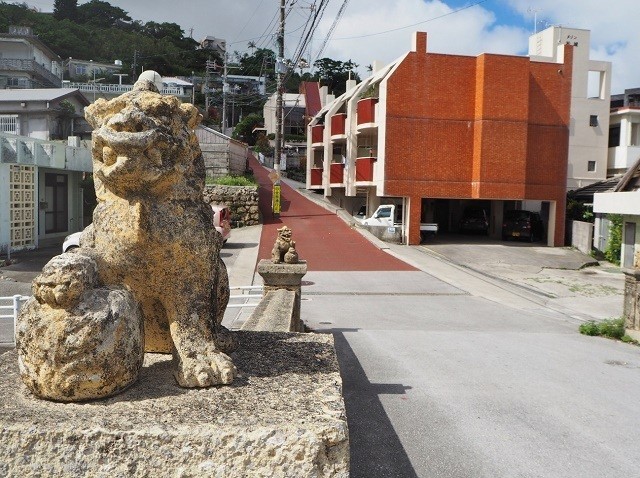
With our hearts still thumping from the terror of the Demon Cake, we descend down the Kinjo Stone Road, go down between roads and arrive at the “Shikinazaka (or Shichinanda) Slope”, directly ahead of the Kinjo bridge.
Though surrounded by a sleepy residential district, it is famous for being the spot of a horror story famous at Okinawa — “the Ghost Lights of Shichinanda”. As the name implies, the ghost light are phantom illuminations said to be the spirits of dead people.
This also is a story with subtle differences between each version, but in all it tells a sad story about a husband and a wife.
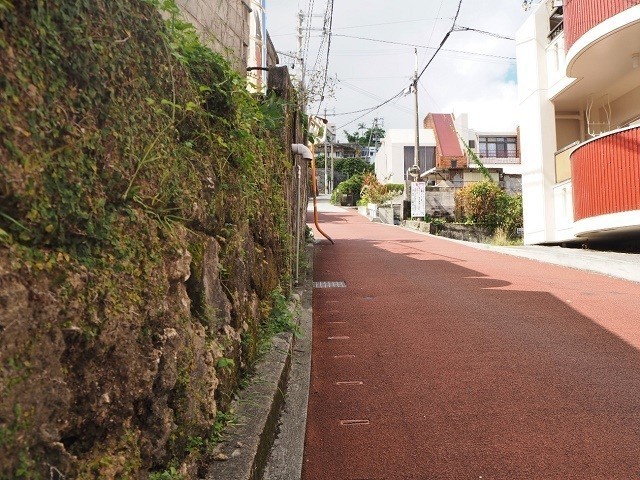
Once upon a time there was a husband and wife who worked as tofu sellers. They were extremely cordial with one another.
The wife, who was an industrious worker on top of being a beauty, went from Shikina to Shuri everyday to sell tofu. And the kindhearted husband fetching her everyday because he was worried about her way home was their daily routine.
A prankster, seeing such a loving and simple couple, fomented a lie that he told the poor husband. “Your beautiful wife is being unfaithful to you,” he said, and his poisonous lie took hold immediately. The husband, in too much shock and grief, threw himself to the river and died. And the wife, having heard of the news, did so likewise to follow him.
From thereon, when the sun sets two phantasmagorical ghost-lights appear. They apparently float from the top of the slope all the way to a riverbank of the Kinjo bridge.
They definitely did live happily NEVER after.
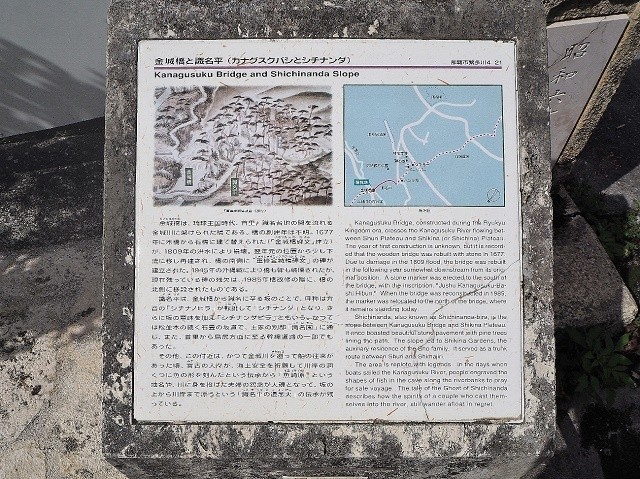
What an extremely troublesome prankster!
More than that, the husband was extremely gullible and carelessly allowed himself to jump to the wrong conclusion!
At the base of the Kinjo-bridge, there is the “Shichinanda Slope Memorial Stone”, and in it the story of the Ghost Lights are also written. For the people of Okinawa, the “Ghost Lights of Shichinandara Slope” is a famous horror story told in a location that actually exists. Perhaps it is closer in image to other horror stories such as the “Yotsuya Kaida” and “Oitekebori”.
Am I the only one who thinks that ancient horror stories are simple yet so scary?
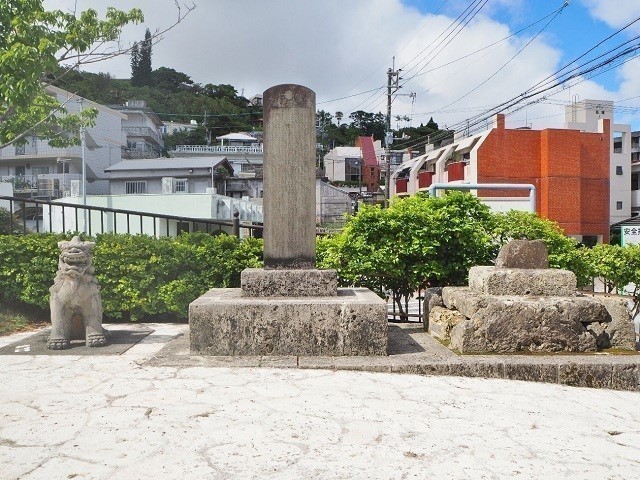
[The Ghost Lights of Shichinandabira Slope]
*Location | 1 minute by foot from Kinjo Stone Road entrance (on the side of the Kinjo Dam)
*Spots Nearby|Shuri Castle, Kinjo Stone Road
3. Mimichiri-Boji, the Ear-cutter Monk | Shuri, Naha
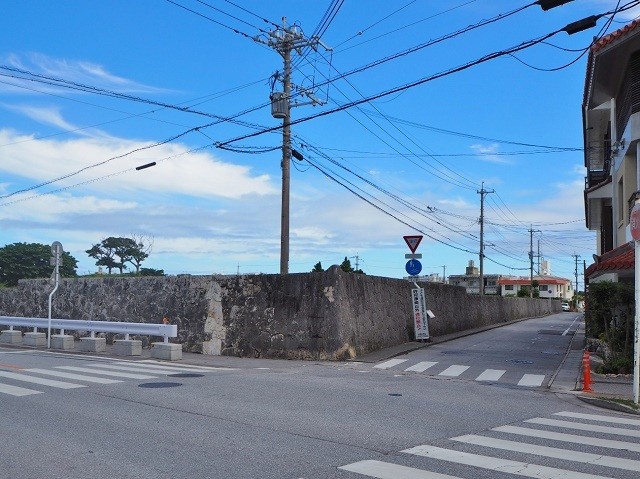
Lullabies — soft little hymns filled with love and benevolence to help sleeping children have good dreams. In Okinawa, there is this particular lullaby that pacifies even crying children.
♪*Ufumura Udun no kado ni
(At the corner of Ufumura Udun)
Mimichiri-boji ga tatteiru
(stands Mimichiri-boji, ghastly and gloom)
Nan-nin tatteiru no kana?
(How many of him, over there, stands?)
San-nin, yon-nin to tatteiru
(3 of him, 4 of him, over there, stand)
Kama mo ko-gatana mo motteiru
(He has a sickle and a knife)
Naku ko no mimi wa, guzuguzu to kiri otosareru zo
(Slash-slash-slash, he cuts the ears of those children who cry)
Hei-yo hei-yo nakanai de♪
(Hey-ho hey-ho, so don’t cry, don’t cry)
(*Original lyrics in Okinawan translated into the Japanese common language)
Now that is terrifying!
Slash-slash-slash… Brr! What a terrifyingly real sound to imagine!
We’d want to cry, but if we did, we’d have our ears cut off!
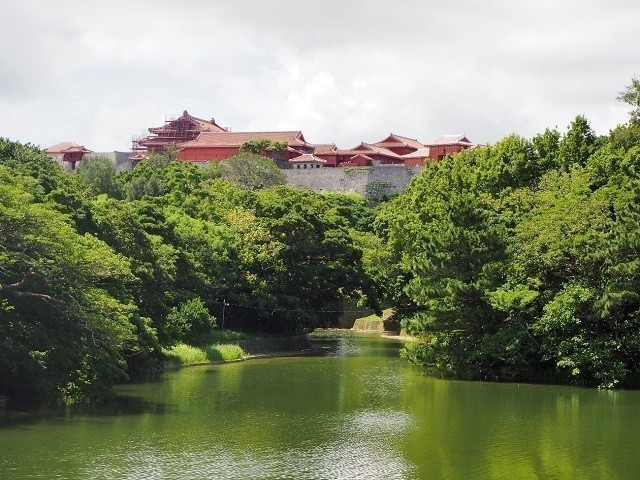
The “Ufumura Udun (modern day ruins of Nakagusuku-Udun)” that features in that extremely illogical children’s lullaby is located across from the Ryutan Pond that surrounds the beautiful Shuri Castle.
The “Mimichiri-Boji” is modeled after the real-life figure of the monk Kurugani Zashi. Kurugani Zashi, who used the art of sorcery to cause all sorts of trouble, lost a duel with Prince Chatan and had his ears cut off in consequence. And even after dying of such ghastly wounds, it is said that he began to appear as the titular Mimichiri-boji every night to avenge himself.
Like every horror story (a lullaby, in this case), Mimichiri-boji was made with its basis on history. However, opinions differ whether the monk Kurugani Zashi was really a villain.
Regardless of historical accuracy, one thing is for sure.
The Mimichiri-boji is horrifying…
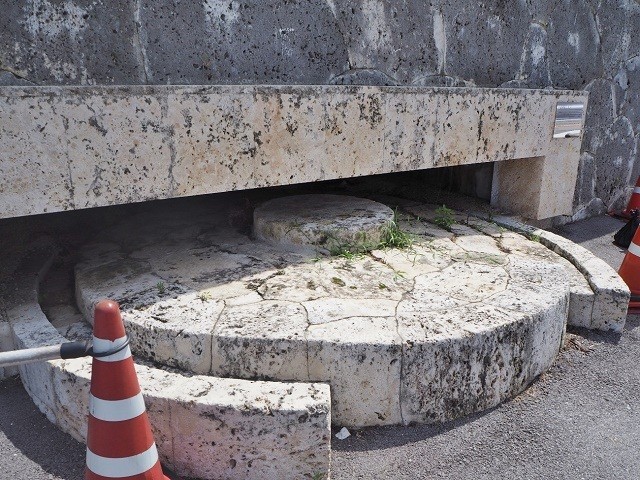
At July 2018, “Ufumura Udun (modern day: Nakagusuku-Udun ruins)” is in maintenance due to an environmental restoration of Shuri Castle. Though you can take a stroll around the ruins, other than the Ryutan Pond, the Shuri Castle and an old well in Nakagusuku-Udun, there is only a part of a stone wall to see.
Regardless of that however, the chilly fear of suddenly seeing the Mimichiri-boji, with his sickle and knife, when turning around corners in Ufumura Udun… it will make you jump at any shadow!
Listen, if you strain your ears maybe you can hear the Mimichiri-boji lullaby —!
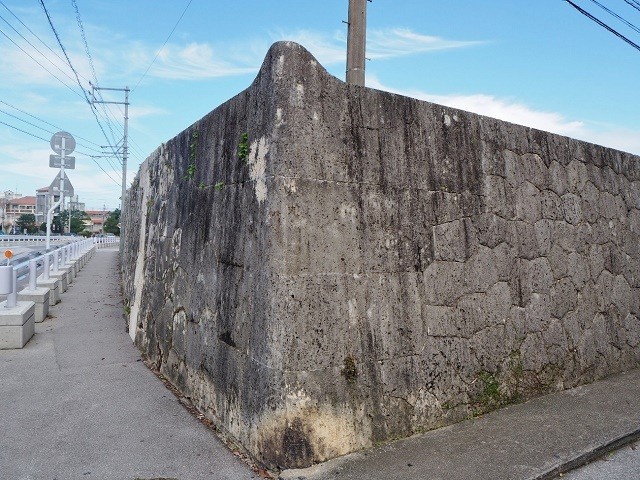
[Mimichiri-boji (Nakagusuku-Udun Ruins)]
*Location | 10 mins. by foot from Shuri Castle
*Nearby Spots | Shuri Castle
4.Nanatsubaka | Makishi, Naha
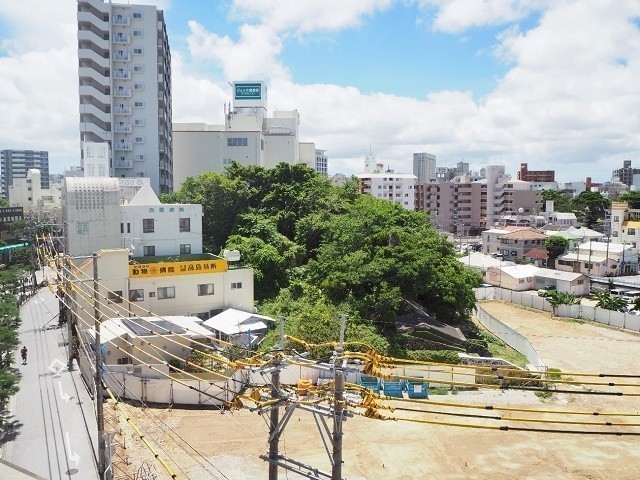
To get away from the Mimichiri-boji, we have come to Kokusai-dori (International Street), a staple spot for tourism.
To begin, we went to an out-of-the-way horror story spot that can be seen from the station of Miebashi, part of the Yui Rail that is highly convenient as a transportation method for Okinawa tourism.
There is a copse of trees In the vicinity of Kokusai-dori, where development is in process. If seen from the platform of the Miebashi Station, an onlooker will know that there is a Kamekobaka, an Okinawan turtleback tomb.
Though it cannot be entered as it is a private property, this is also the place where one of the old horror stories told in Okinawa took place.
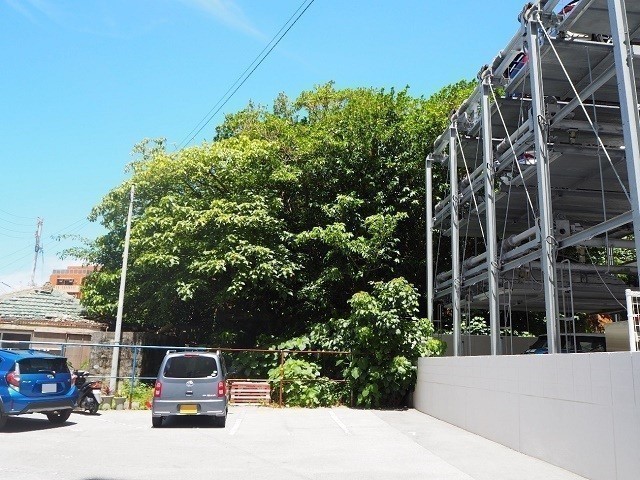
Once upon a time, there was once a business run by an old woman near the forest of Nanatsubaka. One day, there arrived a young woman who would buy candies when it became night.
However, the money that the young would leave in payment would then turn to Joss money, currencies offered to the dead (called Uchikabi in Okinawa). Bemused and mystified, the old woman decided to follow the young woman one night and discovered her entering the forest of Nanatsubaka. The alarmed old women gave chase and entered the tomb. There, she found a most bewildering sight. The remains of the young woman, with a baby eating candies beside its mother’s corpse.
Pitying the young woman who passed away and left behind a baby, the people raised the babe like it was their own — the young woman herself was buried respectfully. It is said that from thereon, the spirit of the young woman did not appear to buy candies.
A ghost buying candies for her baby.
Though there similar stories all around the world, a mother’s love for her child, even if she becomes a ghost, is universal. An extremely bittersweet horror story, to be sure.
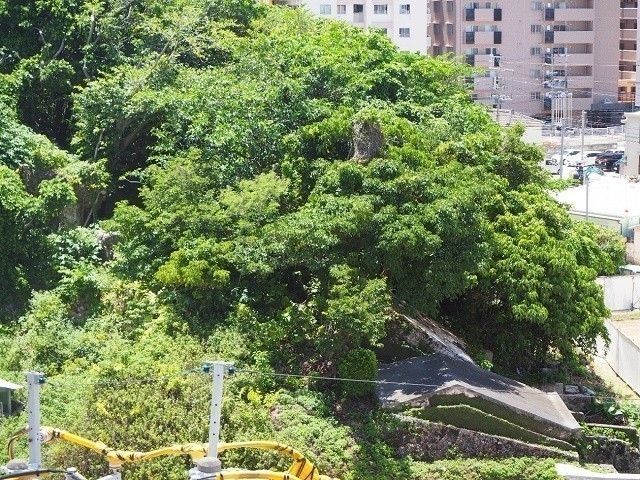
[Nanatsubaka]
*Location | Can be seen from the platform of “Yui Rail”’s Miebashi station
* Spots Nearby | International Street (Kokusai-dori)
5. Kyu-Sogenji Ishimon | Tomari, Naha
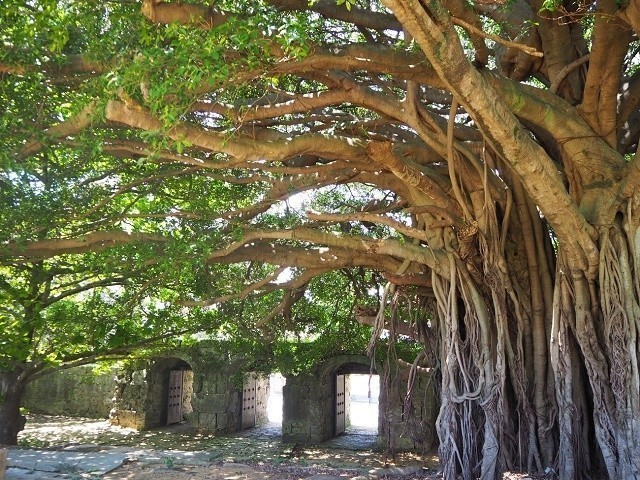
Now, last but not least, let’s set off towards the “Kyu-Sogenji Ishimon” in search of a famous person (or monster, as the case may be) that props up when talking about Okinawa!
Seeing this majestic Gajumaru tree might tip off those who love Okinawa and/or horror stories. That’s right, in the Gajumaru tree located in the “Kyu-Sogenji Ishimon” there is an Okinawan Yokai (spirit) called the Kijimuna (probably)!
The Kijimuna are called “spirits that beckon happiness” or even “prankster-spirits”.
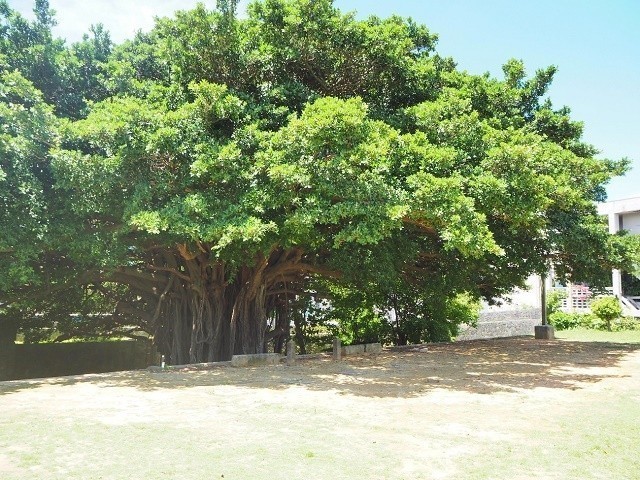
Though there are numerous ancient Gajumaru trees in the prefecture of Okinawa that are said to house these Kijimuna spirits, a tree of this age and magnificence is quite rare.
Though the “Kyu-Sogenji Ishimon” houses such a Gajumaru tree, within its premises there are only the tree and stone gates — there are no buildings, such as a temple. The past Sogen-ji had completely burned down due to the intense destruction of the Battle of Okinawa. Even the stone gate (Ishimon) is said to be something that been restored after the war.
Looking at the Gajumaru tree standing in the middle of an open field that has nothing, it makes one philosophical and think. That, more than spirits and more than ghosts, maybe humans are the scariest of all.
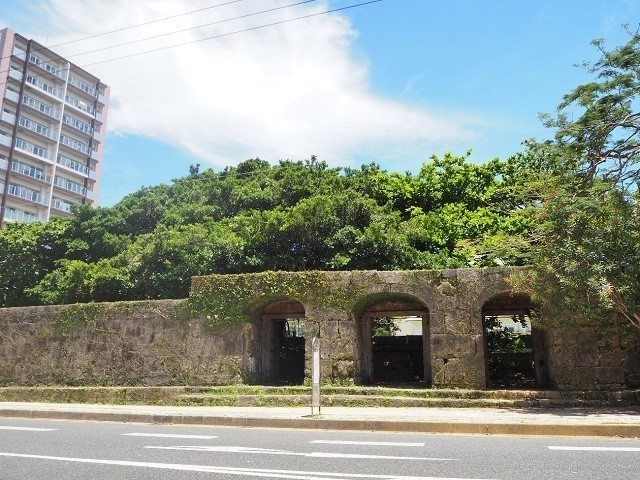
[Gajumaru tree that houses Kijimuna (Kyu-Sogenji Ishimon)]
* Location | 10 minutes by foot from either Makishi or Miebashi stations of Yui Rail
* Nearby Spots | Kokusai-dori (International Street)
6. Right Beside You. . .
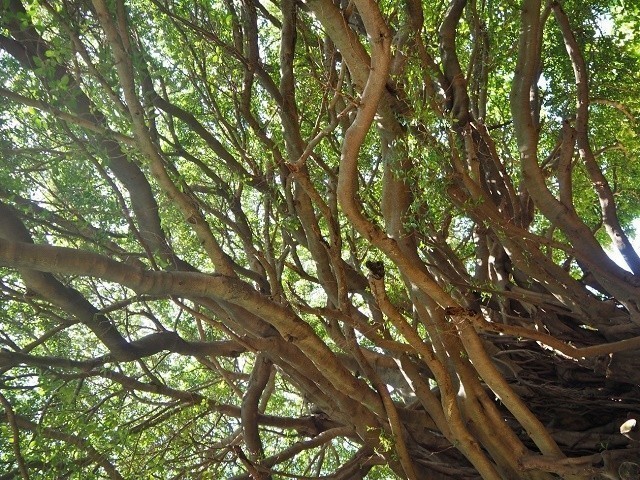
So, did this tour through Okinawa’s horror story spots chill you a little from the heat?
In ancient Okinawa, it is believed that spirits and gods resided in everyday things that surround us, such as animals and Nature. In this island where there is a unique culture and perspective about life and death, there are many, many horror stories and mysterious tales!
That’s right, there might be inhuman things right beside you, just waiting for you to notice them. . .
Author: mochiking



